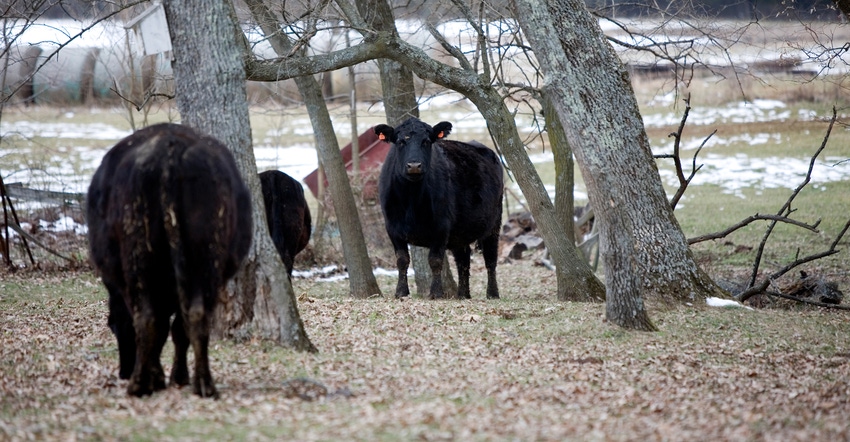October 27, 2022

As the cold weather sets in and winter feeding begins, many bulls have already been removed from the cows to wait for the next breeding season. During this time away from the cows, bulls may be expected to require minimal maintenance to thrive through winter, but it is important to understand the significance of meeting bulls’ needs to ensure their dependability for the next breeding season.
Adequate winter management and nutrition are top needs. Many mature bulls require the same winter management as the cow herd to maintain an adequate body condition score. This means ensuring bulls are fed a balanced diet, including sufficient mineral supplementation, and provided with a windbreak and bedding as needed to keep their hair coat clean and open and to prevent cold injury to their testicles. Young bulls will have a higher nutrient requirement as they are still growing until about 3 years of age. Young bulls should be fed a diet that allows them to gain 1.5 to 2.5 pounds per day.
In addition, it is common for bulls to lose weight and drop a body condition score while breeding cows. They will need to be fed appropriately to return to the preferred body condition score.
Group feeding may also be a cause of concern when ensuring bulls’ nutritional needs are being met. Bulls housed together will establish a hierarchy, which may lead to some bulls being overfed and some underfed if adequate bunk space is not provided. Both conditions can cause problems.
Feeding impacts reproduction
Bulls should maintain a body condition score of 5 to 6 to ensure fertility. A study conducted by the University of Tennessee looked at the impact of overfeeding and underfeeding bulls on their reproductive health. Measurements that were taken included body condition scores, scrotal circumference, and sperm mobility and morphology.
Bulls that were overfed had the greatest change in scrotal circumference, probably due to fat deposition. Sperm motility was not impacted by the differences in diets. However, bulls that were underfed had an increase in sperm head abnormalities, and both overfed and underfed bulls had an increase in total defects to the sperm.
Fertility of bulls that vary from a body condition score of 6 could be impacted and could potentially lead to lower pregnancy rates the next breeding season. This will go undetected if the bull is not fertility-tested prior to the breeding season.
There are many variables at play when it comes to profitability of the cow-calf enterprise. Bulls’ nutrition and winter management is one of these variables. Ensuring bulls have adequate nutrition and winter management will help lessen the probability of bull fertility problems impacting profitability.
Cauffman is the regional Extension livestock educator for Grant, Green, Iowa and Lafayette counties in Wisconsin. This column is provided by the University of Wisconsin Division of Extension Livestock Team.
You May Also Like




